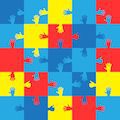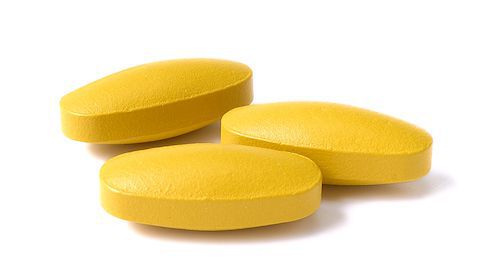What is Autism Spectrum Disorder?

Autism, or autism spectrum disorder (ASD) affects a person’s behavior and ability to communicate and relate with others. ASD is first noticed in childhood and lasts for life. It can be mild or severe. No one knows what causes it and it has no cure, but treating it early is very important!
How do you know if someone has ASD?
Children with ASD have problems in 2 areas:
- Relationships and communication – Children with ASD have trouble relating to others. They often can’t read facial expressions and they avoid eye contact. They might not like being touched and many prefer not to play with others. Children with ASD often take longer than other children to learn to speak. Some never learn to speak.
- Limited interests – Children with ASD often get interested in one specific thing and ignore most everything else. They also tend to have rituals that they must follow exactly. If these habits get disrupted, the children get upset.
Parents often have a gut feeling that something is wrong when a child has ASD. Talk to your health professional if you have that feeling.

What can be done for children with ASD?
It is important to get the right help if your child has any of the signs above. A health professional can do tests to find out for sure if it is ASD. They can make sure that something else isn’t causing the symptoms you see. If your child does have ASD, it's important to get treatment as soon as possible. ASD cannot be cured, but children can overcome some of the problems it causes if they are addressed early.
Applied Behavioral Analysis (ABA)
Applied Behavioral Analysis is one of the best treatments for most children with autism. ABA therapy a therapist finds the behaviors that are getting in the way for your child. Then the therapist helps them practice new behaviors that are healthier. ABA is sometimes very helpful to stop harmful or dangerous behaviors.
Sensory integration therapy
Sensory integration therapy helps the brain work better. It uses activities like swinging, rolling, or jumping on a trampoline. Other activities that can help are brushing the child’s body, or gently squeezing the joints. This therapy is usually done by an occupational therapist (OT).

Supplements
- Some children with autism also have problems with digestion. Probiotics can help.
- Omega-3 fatty acids are important for healthy brain function. You can get these by eating fish or taking a fish oil supplement.
- Vitamin C, vitamin B6 and magnesium, zinc, and methylfolate can help some children with ASD.
- Sleep problems can make ASD worse for some children. Melatonin can sometimes help.
- Talk with your health professional about which supplement might be right for your child.
Special diets
Sometimes changing your child’s diet can help with ASD. Sometimes parents have to try different options before finding what works. Here are some possibilities:
- Elimination Diets are diets in which different foods are taken out of the child's diet. This can help find out if certain foods are making things worse. These diets can be difficult for children with ASD who like to keep things the same. Use a journal or to keep track of diet changes and differences in behavior.
- Gluten-Free, Casein-Free Diet (GFCF) takes out dairy foods and grains with gluten. These include wheat, barley, rye, and sometimes oats. Some parents find that taking these foods out of their child’s diet can help with ASD.
Massage therapy
Massage therapy is helpful for relaxation. It can help with sleep and decrease repetitive behavior in ASD. Some parents learn massage techniques to use at home.
Print Version
References/Resources
American Psychiatric Association. Autism spectrum disorder. In: Diagnostic and Statistical Manual of Mental Disorders, Fifth Edition, American Psychiatric Association, Arlington, VA 2013. p.50.
Baio, Jon. "Prevalence of Autism Spectrum Disorders: Autism and Developmental Disabilities Monitoring Network, 14 Sites, United States, 2008. Morbidity and Mortality Weekly Report. Surveillance Summaries. Volume 61, Number 3." Centers for Disease Control and Prevention (2012).
Green, Vanessa A., et al. "Internet survey of treatments used by parents of children with autism." Research in developmental disabilities 27.1 (2006): 70-84.
Levy, Susan E., and Susan L. Hyman. "Use of complementary and alternative treatments for children with autistic spectrum disorders is increasing." Pediatric Annals 32.10 (2003): 685-691.
Levy, Susan E., and Susan L. Hyman. "Complementary and alternative medicine treatments for children with autism spectrum disorders." Child and adolescent psychiatric clinics of North America 17.4 (2008): 803-820.
Lange, Klaus W., Joachim Hauser, and Andreas Reissmann. "Gluten-free and casein-free diets in the therapy of autism." Current Opinion in Clinical Nutrition & Metabolic Care 18.6 (2015): 572-575.
Piravej, Krisna, et al. "Effects of Thai traditional massage on autistic children's behavior." The Journal of Alternative and Complementary Medicine15.12 (2009): 1355-1361.
Silva, Louisa MT, Robert Ayres, and Mark Schalock. "Outcomes of a pilot training program in a qigong massage intervention for young children with autism." American Journal of Occupational Therapy 62.5 (2008): 538-546.
Smith, Tristram, and Michelle Antolovich. "Parental perceptions of supplemental interventions received by young children with autism in intensive behavior analytic treatment." Behavioral Interventions 15.2 (2000): 83-97.
Zimmer, Michelle, et al. "Sensory integration therapies for children with developmental and behavioral disorders." Pediatrics 129.6 (2012): 1186-1189.
Patient Education Materials
- Acupuncture
- ADHD
- Allergic Rhinitis
- Anxiety
- Aromatherapy
- Asthma
- Back Pain
- Biofeedback Therapy/Training
- Breathing Techniques
- Cancer Symptoms
- Chiropractic
- Constipation
- Depression
- Diabetes
- Dyslipidemia
- Eczema
- Elimination Diet
- Fibromyalgia
- GERD
- Headache
- Healthy Diet
- Healthy Weight / Obesity
- Heart Disease
- High Blood Pressure
- Inflammatory Bowel Disease
- Insomnia
- Irritable Bowel Syndrome (IBS)
- Massage Therapy
- Meditation
- Menopause
- Menstrual Disorders
- Osteoarthritis
- Physical Activity
- Probiotics
- Progressive Muscle Relaxation
- Rheumatoid Arthritis
- Supplements
- Tai Chi
- Yoga